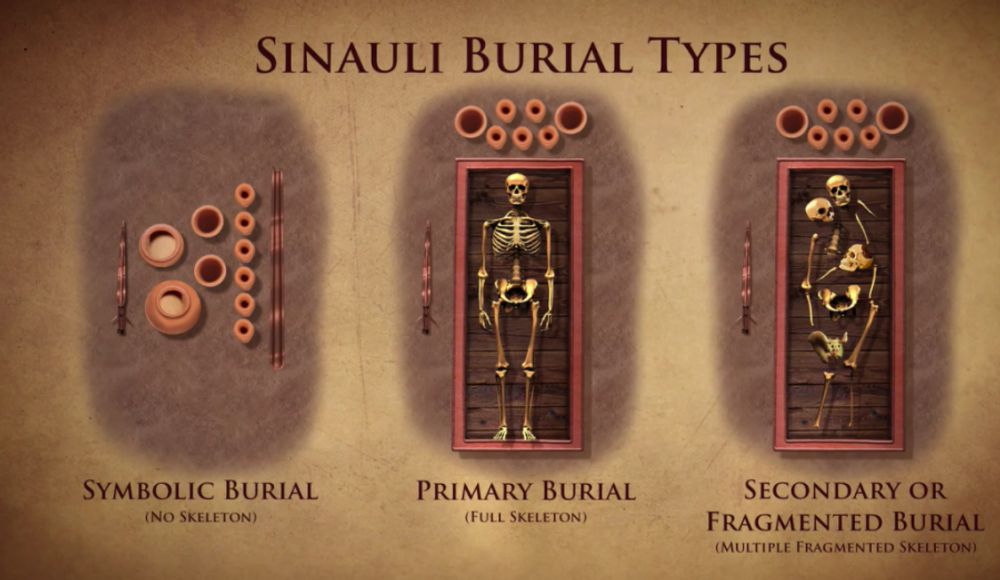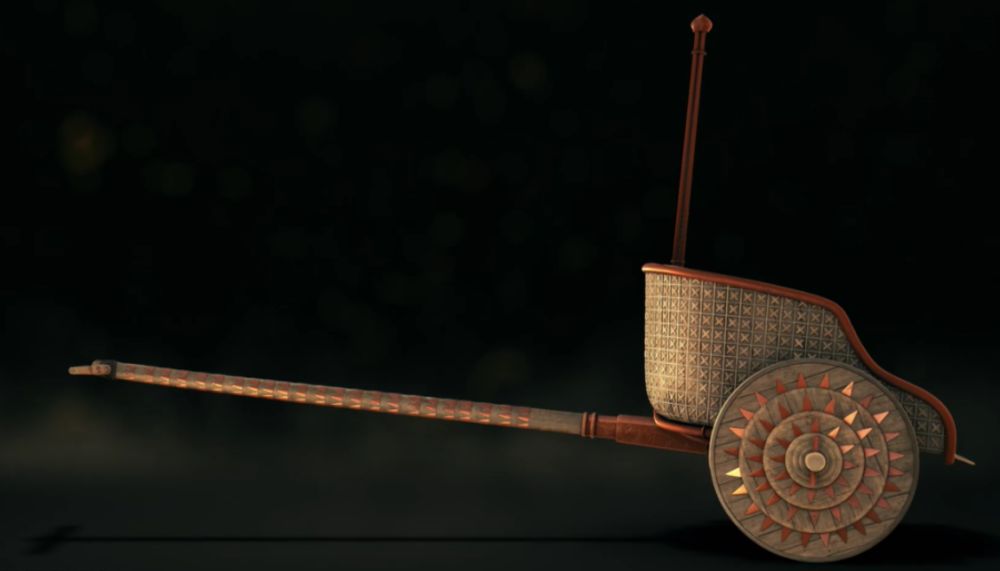

Sinauli, a small village in Uttar Pradesh, has again drawn the attention of anthropologists, archeologist and historians few months back. The first time unearthening of this place was started in 2005. The farmers there were working on their fields when they found some handicrafts, beads and copper pieces while ploughing. The news reached to the Archeological Survey of India (ASI) through media, and soon they started to explore and excavate the site. And here comes, the hidden history just buried beneath the surface.

The excavating site was essentially a burial site. A total of 116 burials were found. The primary investigation of burials revealed the type of cremation that culture followed;

The site was well preserved and the buried coffins too. It was very astonishing that the good preservance of coffins without decaying for some 4000 years. The coffins are made up of wood and moulded with copper for external exposure. The culture was well-versed with the usage of copper.
The measure of bricks found at this site is (4X30X50) centimeters, while the Harrapan bricks are of size (5X10X20) centimeters, which distinguishes the different types of culture and civilization. However, there are many contradictory statements. One such is, Sinauli falls under the Ganga- Yamuna doab, which might indicate that Sinauli people could be late Harappans.
There was a class of warrior women in this Ganga-Yamuna doab region, who were no less equivalent to men of the clan that they belonged. They received equal respect and importance as the men warriors. The archeological evidence concluded the very existence of a class of warrior women in this region. This discovery altered many prejudiced notions about ancient Indian civilizations.
The most astonishing piece comes in one of the male burials with two chariots, two sticks, two channel weapons and many more. He is believed to be a chieftian or a member of the royal family.

The legendary item and this burial could rewrite Indian history, as this is the first-ever chariot to be discovered in India. It was dated to 2100-1900 BCE. This particular burial was different from other ones. The surface of the coffin was designed with some markings. If it is to open, this could reveal the mind-blowing facts of ancient history and the mystery of this place.












